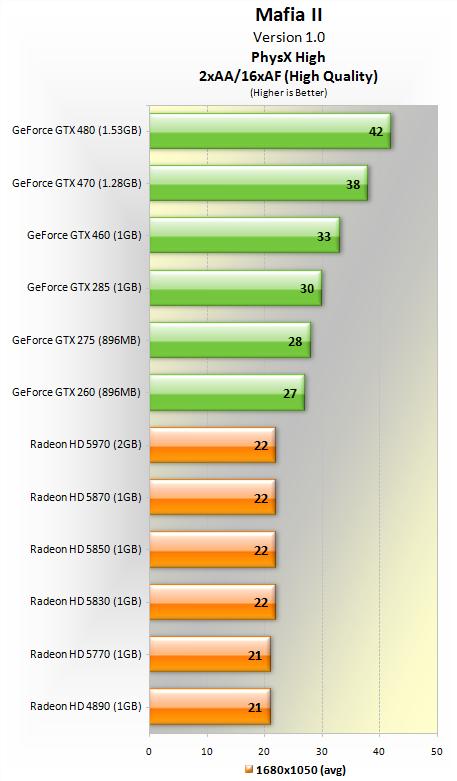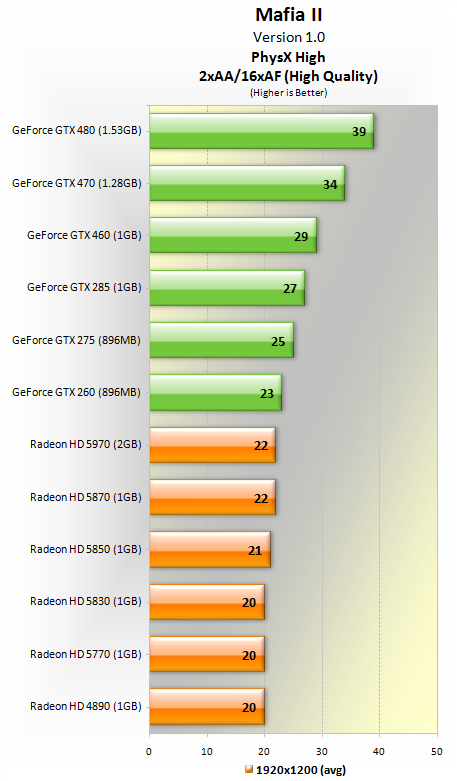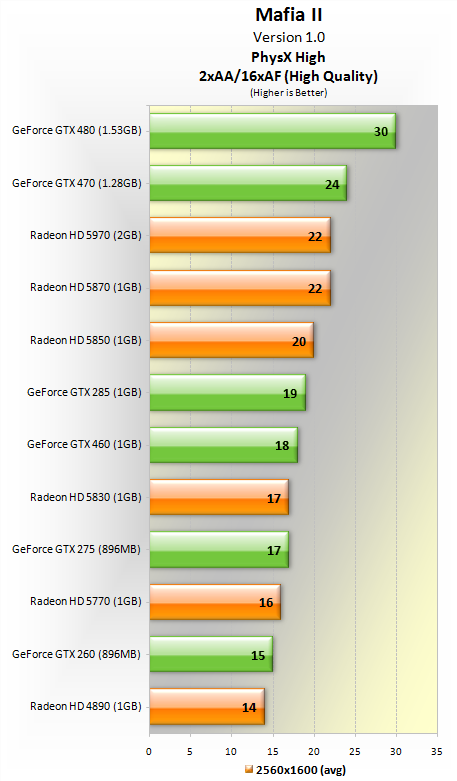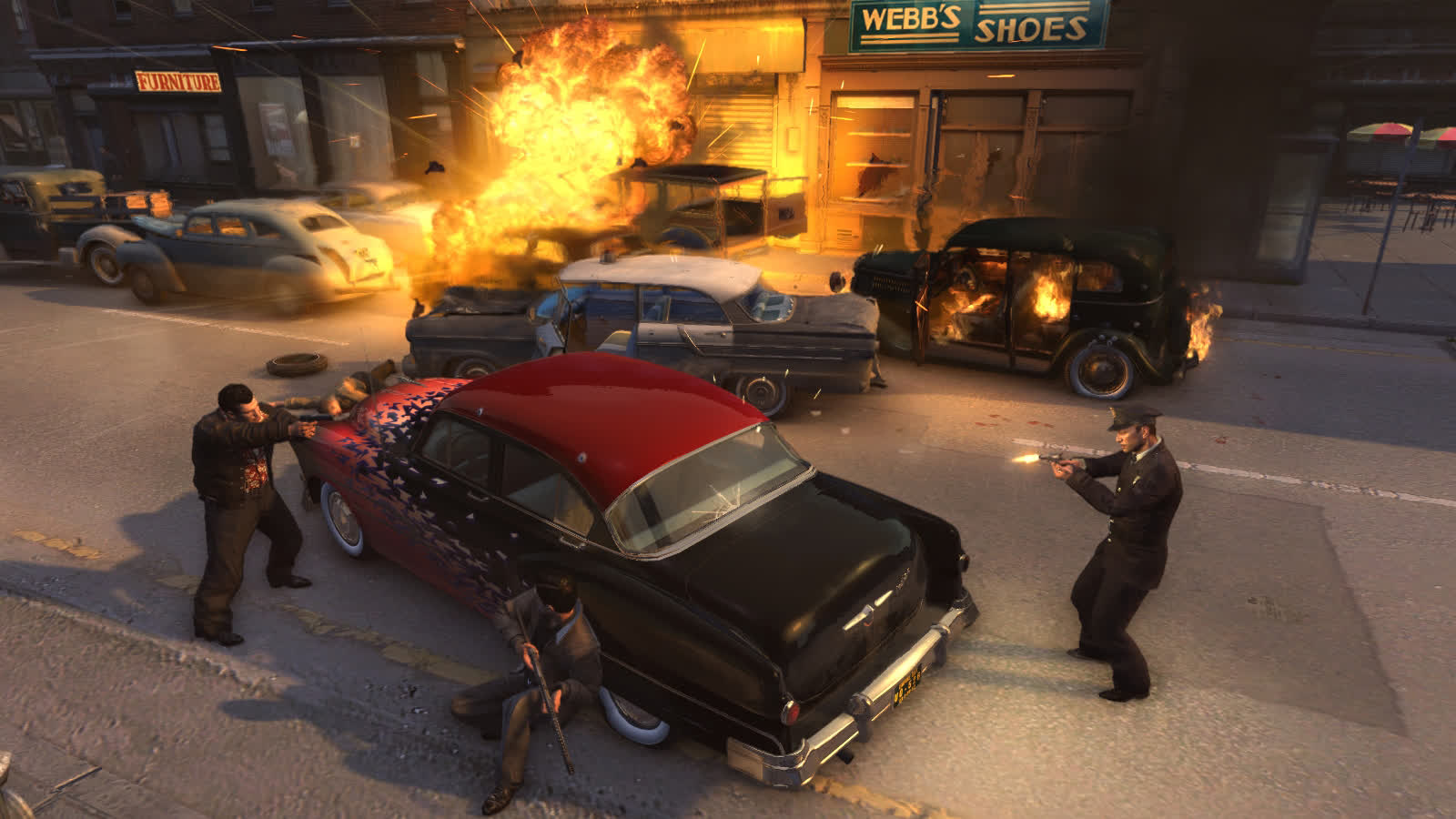Benchmarks: PhysX On/AA On
Here's where things start to become more interesting. Now we are testing Mafia II in all of its glory with anti-aliasing and PhysX enabled. The tested resolutions are the same as before. Please note that the Nvidia cards are using the GPU to process PhysX, while the AMD cards are offloading that work to the CPU which severely limits their performance.

Without a dedicated PhysX card even the GeForce GTX 480 gets crushed at 1680x1050, dropping from 70fps with PhysX disabled to just 42fps with it enabled, a 40% performance reduction. At that rate the game was still very playable at this resolution.
The GeForce GTX 470 was able to deliver playable performance as well with 38fps. Even the GeForce GTX 460 broke the 30fps barrier with an average of 33fps, while the GeForce GTX 285 managed 30fps.
The older GeForce GTX 275 and 260 graphics cards averaged 28 and 27fps respectively. Although this is not an ideal frame rate for perfectly playable performance, some gamers will find the frame rate acceptable.
The AMD cards were all limited to ~20fps as the PhysX processing was handled by the CPU (Core i7 920 overclocked @ 3.70GHz) and not the GPU.

At 1920x1200 the GeForce GTX 480 only drops a few frames per second and is still able to deliver perfectly playable performance. The GeForce GTX 470 rendered 34fps which was enough for perfectly playable performance as well.
The GeForce GTX 460 was close to the mark with 29fps, while the older GeForce GTX 200 series cards all rendered less than 30fps.

The mighty GeForce GTX 480 was reduced to 30fps at 2560x1600, though given anti-aliasing and PhysX were enabled this is not a bad result. Gamers with high-resolution 27" and 30" monitors are going to want at least one GeForce GTX 480 if they wish to enjoy these quality settings.
The GeForce GTX 470 was out of its league here with an average of 24fps, making it just 2fps faster than the Radeon HD 5970 and 5870 cards which were being limited by the CPU.
